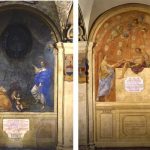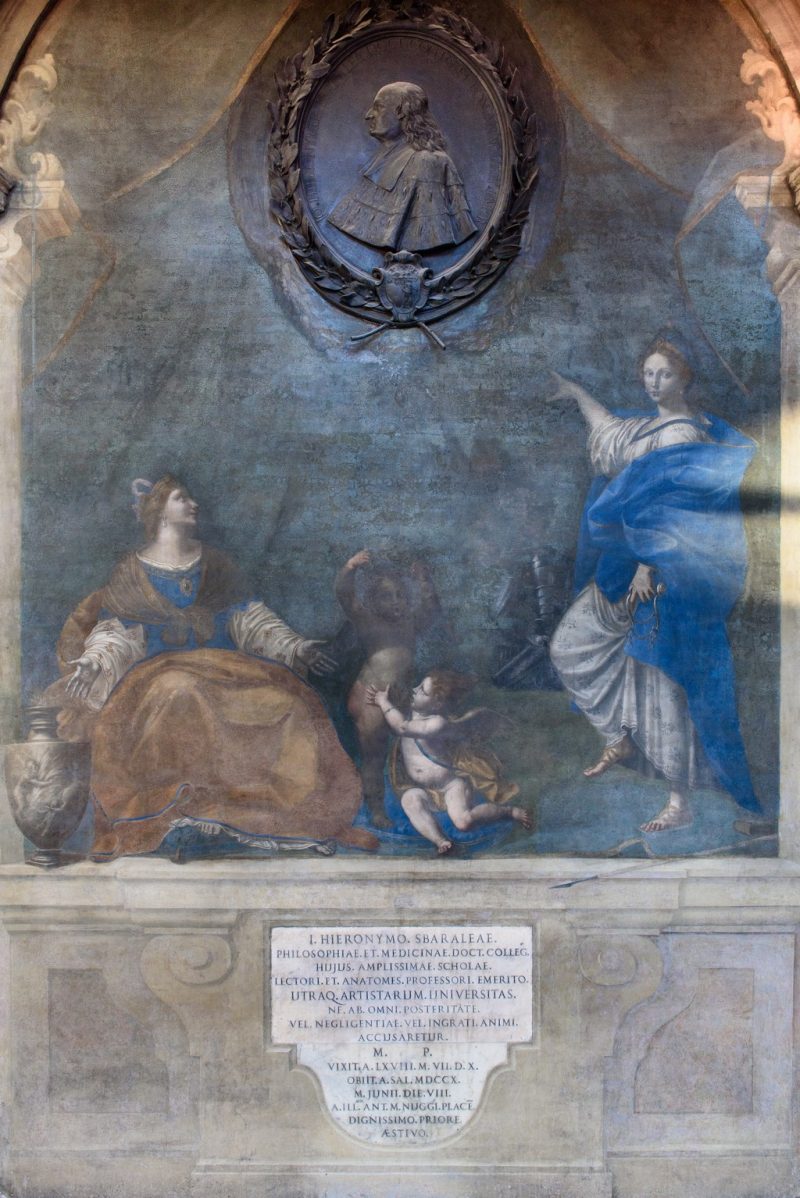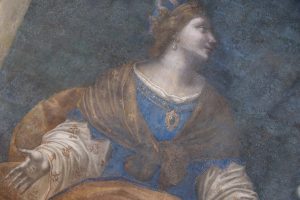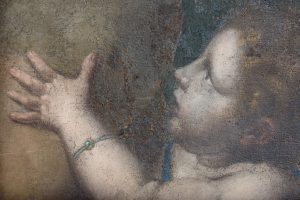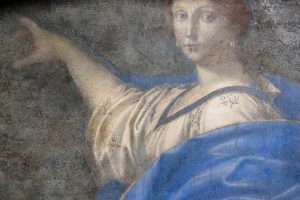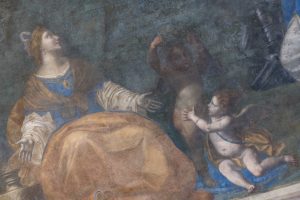This memorial was realised by Donato Creti (1671 – 1749) and Giuseppe Mazza (1652 – 1741).
Sbaraglia held the chair of Anatomy and Medicine for forty years and died in 1710, at the age of 69.
His testamentary dispositions were important for the city, as they linked his heritage to the creation of a public library, but his heir Marco Antonio Collina didn’t succeed in realizing it anyway, so he donated G. G. Sbaraglia’s books to the library of the Jesuits of Saint Lucia and to the library of the Institute of Sciences.
The bronze portrait of Sbaraglia results from the medal made by Ferdinand de Saint-Urbain, and the portrait was realised by Giuseppe Maria Mazza on a drawing by Creti, who also made an engraving.
The painting was realised in oils on the wall surface in 1713 by Donato Creti but, as early as 1717, the painter wrote a letter explaining that the painting had been ruined by the lime, because it was made on a wall that was still wet.
In this work Creti uses a palette of a great chromatic refinement, with the characteristic ultramarine blue colour.
Two allegorical figures, the Experience (which has the eyes drawn on the palms of the hands) and the Reason(which holds a horse bit, alluding to the ability to tame the passions) show the medallion above, with Sbaraglia’s effigy, to the viewer. The figures are elegant as porcelain statues and, in their faces, they take the guise of the painter and of his beautiful wife.Their profiles are like engraves on cameos and embellished by the teardrop earring frequently used by the painter..
As in religious paintings, the double human and celestial level is reproduced here, to which is added the scenic artifice of the curtain which opens like in a theatre is added.
The brushstrokes are fluid, antithetical to Giuseppe Maria Crespi’s full-bodied and direct painting of touch.
Crespi was the other great interpreter of the Bolognese painting of the eighteenth century.
Curiosities:
